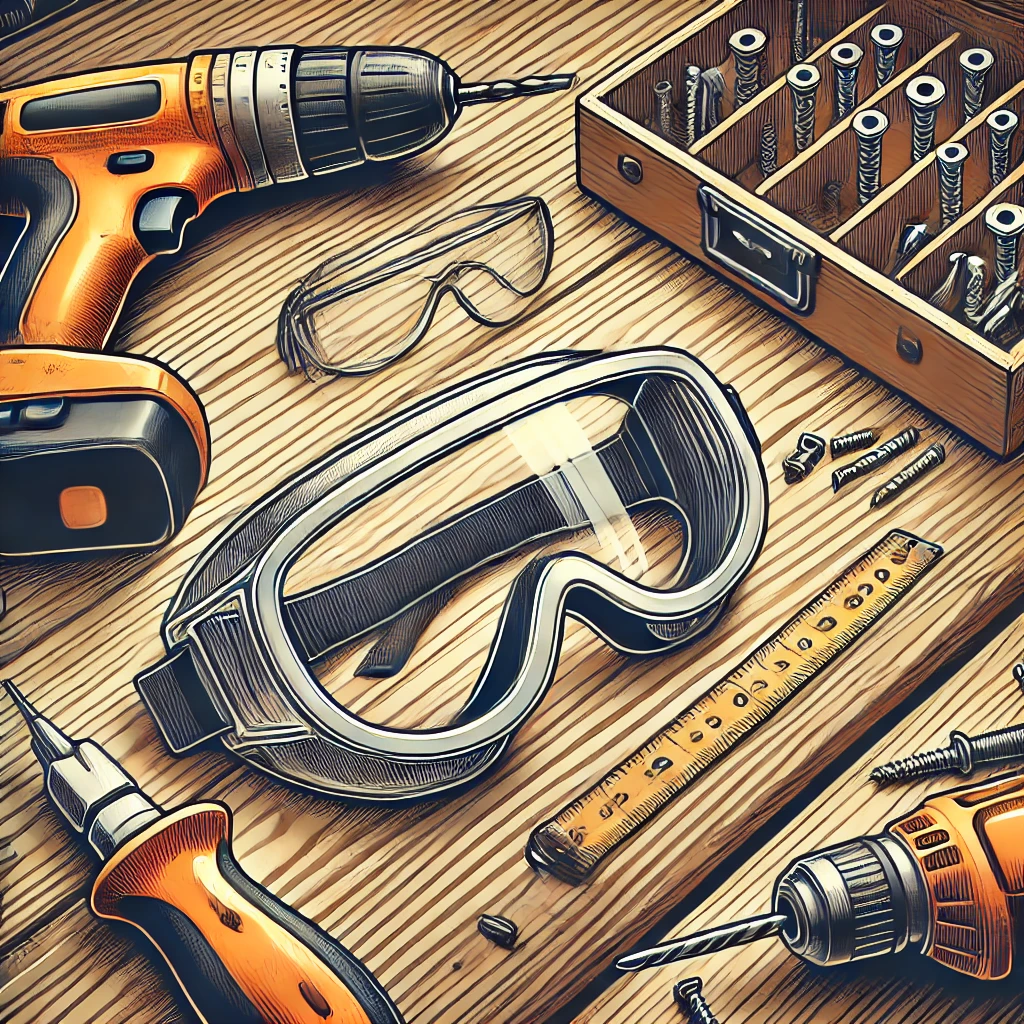Eye protection is essential for anyone engaging in DIY projects to safeguard their eyes from potential hazards such as flying debris, chemical splashes, and intense light. Proper eye protection reduces the risk of injury and ensures that your vision remains unharmed while you work on various tasks.
Types of Eye Protection
- Safety Glasses: Basic eye protection that covers the eyes and is usually made of impact-resistant polycarbonate.
- Goggles: Provide a seal around the eyes to protect against dust, splashes, and fumes.
- Face Shields: Offer full-face protection against impact, chemical splashes, and high temperatures.
- Welding Helmets: Protect the eyes and face from the intense light and heat generated during welding.
- Laser Safety Glasses: Designed to protect against specific laser wavelengths.
- Prescription Safety Glasses: Customized safety glasses for those who require vision correction.
Key Features of Eye Protection
- Impact Resistance: Ability to withstand high-velocity impacts.
- UV Protection: Shielding against harmful ultraviolet rays.
- Anti-Fog Coating: Prevents the lenses from fogging up.
- Scratch Resistance: Durable lenses that resist scratches.
- Comfort and Fit: Adjustable and comfortable for prolonged use.
- Side Shields: Additional protection from side impacts.
Choosing the Right Eye Protection
When selecting eye protection, consider the specific hazards associated with your DIY project. For general tasks, safety glasses with side shields may suffice, while more hazardous activities like chemical handling or woodworking may require goggles or a face shield. Ensure the eye protection meets relevant safety standards, such as ANSI Z87.1 in the United States.
Proper Use and Techniques
Always wear eye protection before starting any DIY task. Make sure the eye protection fits snugly and comfortably on your face, providing adequate coverage. For goggles and face shields, ensure a proper seal around the edges to prevent debris or liquids from entering. If you wear prescription glasses, use safety goggles or prescription safety glasses that accommodate your vision needs.
Maintenance and Care
To ensure your eye protection remains effective, clean it regularly with mild soap and water or a specialized lens cleaner. Avoid using abrasive materials that could scratch the lenses. Store your eye protection in a protective case to prevent damage when not in use. Inspect the eye protection regularly for any signs of wear or damage, and replace it if it no longer provides adequate protection.
Safety Tips
- Always choose the right type of eye protection for the specific task.
- Ensure a proper fit to maximize protection.
- Do not remove eye protection while in the hazardous environment.
- Replace damaged or scratched eye protection immediately.
- Educate yourself on the potential hazards of each DIY project to understand the level of eye protection required.
Conclusion
Eye protection is a critical component of DIY safety, providing a barrier against numerous hazards. By selecting the appropriate type of eye protection, using it correctly, and maintaining it properly, you can significantly reduce the risk of eye injuries. Always prioritize your safety to ensure that your DIY projects are both enjoyable and injury-free.


